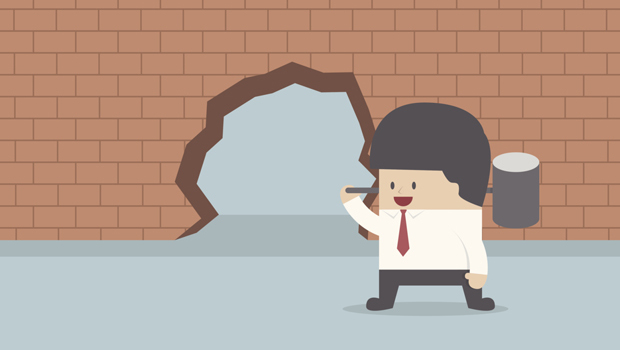
4 Ways to Banish Writer’s Block
Microsoft Word is open on your computer. You’re staring at the blank white screen. You type one sentence. You hit “delete.” You try again with a different sentence. “Delete.” You sigh. You stare. You bang out a few more words. Again, “delete.”
You’ve got nothing.
Writer’s block. We’ve all been there. When asked about the most frightening thing he had ever encountered, Ernest Hemingway said, “A blank sheet of paper.”
Although it’s frustrating while you’re in the moment, writer’s block doesn’t have to be completely crippling. Here are a few strategies to try the next time you’re feeling stuck and those words just aren’t flowing freely.
1. Start Anywhere But the Beginning
“One of the most difficult things is the first paragraph,” said novelist Gabriel Garcia Marquez. Often you’re so caught up in writing the perfect first sentence or first paragraph that you’ve placed yourself in a rut right off the bat.
Who says you have to start from the beginning? Try starting in the middle of your article, or even the conclusion. Don’t worry about the perfect opening and go straight into the nitty gritty. Once you’ve got all the pieces and points of your article, email or even social post down, you’ll have likely found a groove and can go back to the introduction and transitions. (Case in point: When drafting this blog post, I started with this paragraph first, just because I use this approach all the time and I knew it would be the easiest point for me to write.)
2. Freeflow
If you know what you want to say but the words and sentences just aren’t coming to you, try capturing your ideas a different way – draw pictures or charts, organize with arrows or columns, or jot down major points and supporting points on index cards for easy rearranging. The goal is to get everything down first, organize and then wrap them with complete sentences.
3. Break It Down
Mark Twain famously said, “The secret of getting started is breaking your complex overwhelming tasks into small manageable tasks, and then starting on the first one.” When it comes to writing, that white paper or how-to guide might seem formidable, but if you break it down into smaller parts, it won’t seem so huge and you’ll feel like you’re making progress faster.
For example, say you’re trying to write a guide about the top 10 ways to do something. An easier way to tackle it might be to first jot down the 10 things in list form, and then go back and add descriptions or explanations.
4. Take a Breather
Sometimes, the pressure to perform really does build up until it becomes almost paralyzing. If the above strategies to overcome writer’s block aren’t working, there’s nothing wrong with taking a break. But instead of logging onto Facebook or surfing the Web, step away from the screen; you want to clear your head instead of cluttering it with potentially distracting information. Make a cup of coffee or tea. Take a five minute walk. Stare out the window. Then try writing again.
What do you do when you’ve got a case of writer’s block? Share your tips in the comments!
Get more marketing and small business tips by subscribing to the VR Buzz weekly newsletter.
© 2014 – 2018, Contributing Author. All rights reserved.



